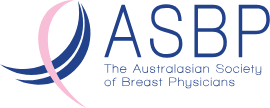Journals and Media
News
Pollution Linked To Higher Breast Cancer Risk in Biggest Study Yet
Women living in areas with high air pollution are more likely to have dense breasts, boosting their chances of developing breast cancer, a major new study has found.Breast density has been shown to have a strong link to breast cancer. Women with the most dense breasts — the highest proportion of fibroglandular, rather than fatty, tissue — are three to five times more likely to develop the disease than those with the least.
Atypical Hyperplasia of the Breast – Risk Assessment and Management Options
Lynn C. Hartmann, M.D., Amy C. Degnim, M.D., Richard J. Santen, M.D., William D. Dupont, Ph.D., and Karthik Ghosh, M.D
Breast biopsies are commonly performed to evaluate mammographic or palpable findings that are of concern, and the majority reveal benign findings. More than 1 million of the breast biopsies that are performed annually in the United States are found to be benign.1 On the basis of the histologic findings, it is possible to stratify women with benign biopsy findings into groups with significantly different risks of later breast cancer.2,3 Atypical hyperplasia is a high-risk benign lesion that is found in approximately 10%of biopsies with benign findings.4 In this article, we examine these benign lesions because they have special importance as a predictor of future breast cancer. There are two types of atypical hyperplasia, as classified on the basis of microscopic appearance: atypical ductal hyperplasia and atypical lobular hyperplasia; these occur with equal frequency and confer similar risks of later breast cancer ( Table 1 Risk of Breast Cancer among Women with Atypical Hyperplasia.). 2,3,9,10 Thus, throughout this article, the varieties will be referred to together as “atypical hyperplasia.”
To read more please go to the article.
How Many People Will Be Diagnosed With Cancer In Your Suburb in 2018?
More than 46,000 people in NSW will be told they have cancer in 2018, official projections show.
The sobering forecast also predicted the number of new breast, lung, bowel cancer and melanoma patients who will be diagnosed across every Sydney local government area (LGA) this year.
To read more please go to the article.
Exercise is Best For Reducing Breast Cancer Recurrence
By Ana Sandoiu
Breast cancer survival rates are very high compared with other forms of cancer, but in some cases, the cancer does comes back. New research highlights key recommendations that breast cancer survivors can incorporate into their lifestyle so as to reduce the risk of breast cancer recurrence.
To read more please go to the article.
Please also refer to and “like” the ASBP Facebook Page for further information.
